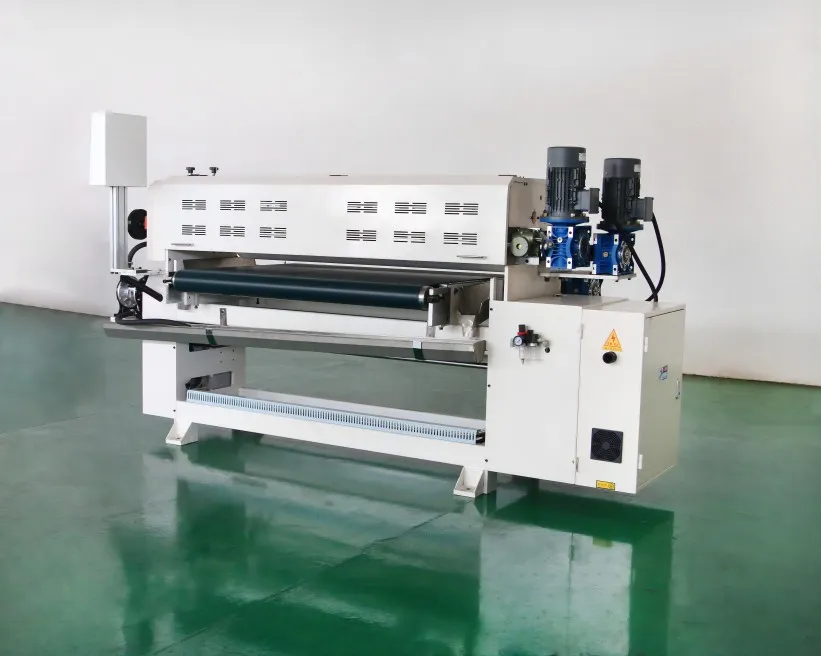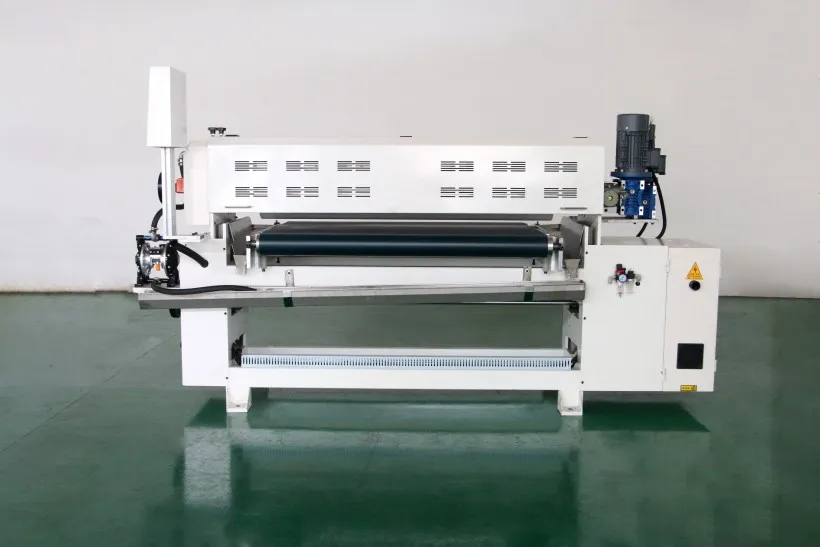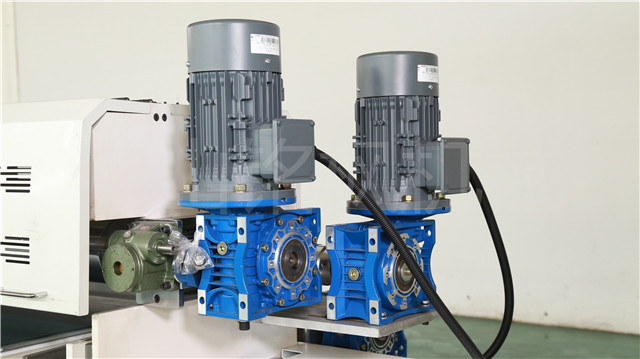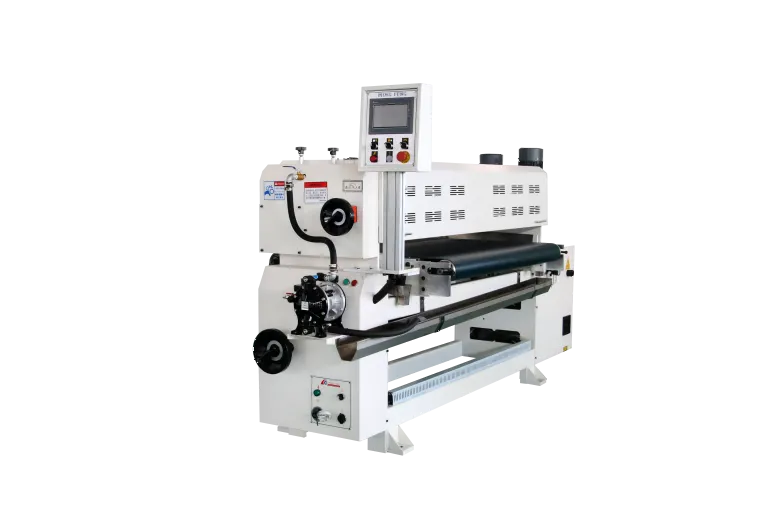A roller coating machine is a surface treatment device used to evenly apply coatings (such as adhesives, UV paint, and water-based paint) to flat or coiled substrates using a roller. Its applications are extensive, including furniture panels, door panels, metal sheets, electronic films, labels, and packaging.
When purchasing equipment, understanding the price range and factors influencing a roller coating machine is crucial for budgeting and making selection decisions.
According to current market data, the price range for a roller coating machine generally ranges from $8,000 to $20,000. Why is there such a wide price difference? What factors drive the cost of the equipment? What configurations and specifications should companies focus on when purchasing?
This article will address the question of "How much does a roller coating machine cost?" and provide an in-depth analysis of its price structure and influencing factors, providing a comprehensive and professional reference for companies or individuals with practical purchasing needs.

Introduction to Roller Coating Machines: Understanding the Price
Before discussing price, it's important to have a clear understanding of the basic operating principles and functional structure of a roller coating machine.
1. Operating Principle Overview
A roller coating machine is a mechanical device that uses rotating rollers to evenly apply coating to a substrate surface. Its core components are one or more coating rollers and a conveyor platform that transports the substrate. By controlling the gap, pressure, and rotational speed between the rollers, continuous, high-precision coating and surface application are achieved.
2. Wide Range of Applications
• Woodworking Industry: Used for roller coating of primer or topcoat on furniture panels, solid wood doors, and wood veneer;
• Building Materials Industry: Surface coating of materials such as PVC, metal sheets, aluminum, and fiberglass;
• Electronics Industry: Surface coating of mobile phone cases, panels, and printed circuit boards;
• Printing and Packaging: Used for processes such as paper coating and film lamination.
3. Basic Construction Modules
A standard roller coating machine primarily consists of the following components:
• Coating roller and metering roller (or doctor blade);
• Paint supply system (pump, filter, return system);
• Substrate conveyor system (belt or roller conveyor);
• Electrical control system (touch screen, human-machine interface);
• Coating thickness adjustment system (electric or manual);
• Frame structure and safety devices.
Equipment prices fluctuate based on the specifications and configuration levels of each of these subsystems.

Roller coating machine price range analysis: Analysis of the difference between $8,000 and $20,000
In the current international market, based on statistical analysis of factors such as "XMF Machinery" manufacturer quotes, platform reference prices, technical specifications, and market demand, roller coating machine prices primarily range from $8,000 to $20,000.
This price range reflects the significant differences in roller coating machine manufacturing processes, configuration specifications, brand value-added, and automation levels.
1. Price Range Comparison
Price Range (USD) | Equipment Level | Typical Configurations | Applicable Scenarios |
| 8,000 to 12,000 | Entry-level | Single roller, manual adjustment, basic control system | Small factories, testing facilities |
| 12,000 to 16,000 | Standard mid-range | Dual roller structure, electric adjustment, digital control | Medium-capacity furniture manufacturers |
| 16,000 to 20,000 | High-end configuration | Multi-roller synchronization, PLC + touch screen, servo motor control | Automated production lines, high-volume production lines |
From a price perspective, the price of a roller coating machine is closely related to its degree of automation, control accuracy, roller material, and process complexity.

What are the key factors influencing the price of a roller coating machine?
1. Roller Structure and Material
• Single/Dual/Triple Roller Structure: A single roller offers the lowest cost and is suitable for single-sided coating; a dual-roller structure improves coating uniformity; a triple-roller model allows for more precise coating control and simultaneous double-sided operation.
• Roller Material: The cost of using rubber, stainless steel, ceramic, or mirrored metal rollers varies; mirrored rollers offer higher precision and are more expensive.
2. Coating Control System
• Metering Roller vs. Doctor Blade System: Doctor blade systems are more suitable for high-precision, thin coatings but have higher manufacturing costs.
• Coating Return System: Equipment with automatic circulation and filtration systems is more expensive.
• Pumping Method: The structural differences between pneumatic, electric, or peristaltic pumps can affect the price.
3. Control System and Automation Level
• There is a significant price difference between manual and electric adjustment.
• Whether or not a PLC controller, touch screen, or automatic thickness detection device is equipped is crucial.
• Automatic feeding and automatic shutdown functions can also significantly increase the price.
4. Working Width and Compatible Substrate Size
• Different widths, such as 600mm, 1300mm, 1600mm, and 2000mm, correspond to different production capacities.
• Wide-width coating equipment uses more materials and has a more complex structure, resulting in a higher price.
5. Brand and Manufacturer Process
• Equipment provided by international brands and established manufacturers offers advantages in precision, stability, and after-sales service, but is often priced higher.
• Some domestic manufacturers offer products with comparable features at lower prices, making them suitable for budget-conscious customers.
The Correlation Between Price and Performance of Roller Coating Machines
When selecting a model, companies should not rely solely on price. The following dimensions directly impact the overall cost-effectiveness of a roller coating machine:
1. Coating Accuracy and Repeatability
Higher-priced equipment typically offers lower thickness fluctuations (within ±3μm), which is particularly critical for high-quality finishes.
2. Coating Speed
Entry-level equipment typically runs at 10-20 m/min, standard models at 25-40 m/min, and high-end models at over 60 m/min. This difference in output per unit time directly impacts production costs.
3. Service Life and Ease of Maintenance
High-end models often utilize high-quality bearings, roller coatings, and enclosed electrical control boxes, resulting in high durability, long maintenance cycles, low failure rates, and lower long-term operating costs.
4. Energy Consumption and Paint Utilization
A roller coating machine with a well-designed structure not only reduces power consumption but also increases paint utilization to over 90%, indirectly saving significant consumables costs.

Roller Coating Machine: How to Evaluate Price Reasonability?
When faced with the volatile roller coating machine market, the following tips can help companies make more informed purchasing decisions:
1. Clarify application requirements
• Target substrate size and production capacity requirements;
• Coating type (water-based, solvent-based, UV, PU);
• Whether it will operate in conjunction with other equipment (such as curing, sanding, etc.);
2. Avoid blindly pursuing high-end features
Small-batch, non-continuous production environments do not require high-end equipment; basic models with simple structures and manual adjustments can be preferred.
3. Compare quotes from multiple manufacturers
Compare prices based on the same configuration, and request specifications, component brands, warranty terms, etc. to avoid overpaying for hidden configuration differences.
4. Consider long-term operating costs
Maintenance costs, energy consumption, and the frequency of replacement of wearable parts are also "hidden costs" that should be considered beyond the unit price.
Price isn't the only consideration when choosing a roller coating machine; suitability and cost-effectiveness are more crucial
A comprehensive analysis shows that the price of a roller coating machine ranges roughly from $8,000 to $20,000, primarily influenced by factors such as configuration, automation level, precision control capabilities, and brand name. While high-priced equipment may offer powerful performance, it's not suitable for all scenarios. While low-priced equipment may offer lower initial costs, it may face issues with efficiency and stability during later operations.
For companies planning to purchase a roller coating machine, the ideal strategy is to thoroughly assess their production needs and select equipment that offers sufficient performance and manageable costs, rather than simply pursuing price.
What payment and purchasing options does XMF Machinery offer?
We provide flexible purchasing options, including direct factory sales, bulk order discounts, and tailored payment plans to accommodate customer budgets. Buyers can request competitive quotes and explore wholesale pricing. Our goal is to simplify the purchasing process and provide cost-effective, high-quality coating machinery solutions worldwide.
